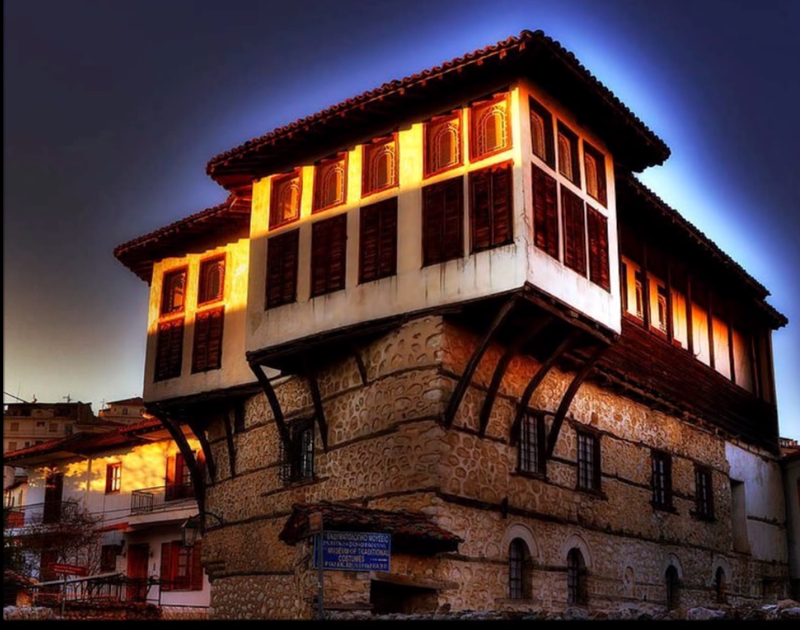
WHAT IS A MEYHANE ?
A Meyhane - also known as Meykhane - or in Persian: میخانه, is a
traditional restaurant or bar in Iran, Turkey and in the Balkans regions.
Meyhane is composed of two Persian words: mey (wine) and khāneh (house).
Its a place where alcoholic beverages like are served with MEZE (snacks) and
traditional foods.
The word Mayhane entered the Serbian and Bulgarian language as
MEHANA (механа, plural механе, in Bulgarian механи) and as
MEANA (меана, plural меани) in Macedonia. In Bosnia the word
MEJHANA is used.
Today in Serbia the word is considered archaic, while in Bulgaria it refers
to a restaurant with traditional food, trad decoration and folkmusic.
Until the late 19th century a meyhane used to serve mainly wine and meze
when rakia established itself as the quasi-official national drink of Turkey
Years later meyhane owners raised the number of meze and meals and started
to offer new activities like traditional folkmusic in the balkans and FASIL* in Anatolië.
Most Turkish meyhane keepers used to be of Greek origin, and they were
called Barba (uncle in Greek). However, they were eventually replaced by
Muslim meyhane keepers. Nearly all of these novices were raised and trained
by barbas.
Today in the Balkans & Anatolia, the word "meyhane" seems to be preferred
for cafés, where local folks gather and drink and the traditional Turkish and
Roma music can often be heard in meyhanes, with the patrons singing along.
*) Fasil or Fasul
is a musical suite in Ottoman classical music - similar to the Arabic NAWBA and WASLAH .
Traditional Fasıl (both classical and modern) is a musical act distinct from the performance of "oriental" or "arabesque" pop and folk songs found at meyhanes and taverns.
HISTORY OF MEYHANE
The history of the Meyhane starts in the Byzantine Empire. Meyhane culture continues in seaside cities where merchants stop and spend their time and money on drinking. During the period of the Ottoman Empire, the number of meyhane increased considerably.
Some sultans prohibited alcohol at various times but it didn't affect the number of Meyhane. While the Muslim population usually complied with the religious rules, no one interfered in the conventions of the minority population. A major part of the minority population lived in Galata (N-Istanbul) and, as a result, there were many Meyhane in that district. But there were also many Muslim clients who went there secretly.
During the period of Sultan II. Selim, Damat Ferit Paşa (1853-1923) the Meyhane re-opened and a period of pleasure started once more. However, the sultan mandated a new law that banned opening Meyhane in Muslim districts.
TYPES OF MEYHANE
GEDIKLI MEYHANELER / SELATIN MEYHANELER
In the 17th century the restaurants used to be in Haliç - "the golden horn" of Istanbul, now the Bosphorus - These Meyhane were visited by JANISSARY clients (sultans troops & bodyguards, Janitsaren) who were called DAYI and everyone respected them. While the janissaries were in the Meyhane, corner boys (baldırı çıplak) and vagabonds (külhanbeyleri) couldn’t enter. Even if they entered, there weren’t allowed the same behavior as janissaries and they could only drink while standing. After sultan Abdülaziz (1830-1876) the name changed into Selatin Meyhaneler!
Gedikli Meyhaneleri of Istanbul were famous for the cleanliness of their kitchen and the skills of their cook, especially in meals of fish and meat. This type of meyhane had tall ceilings. There was also a barrel which came from Malta or Aegean islands. On the tables there were candlesticks. The meze plates were put around them. The chairs were usually short and wooden.
Safa meyhanesi is the only meyhanesi today that has the same interior design as the old days.
KOLTUK MEYHANESI / KIBAR KOLTUKLARI
Another type of meyhane: for vagabonds and corner boys. These meyhane were illegal. They were selling alcohol surreptitiously in grocery stores. Some of these “Koltuk Meyhanesi” were called “Kibar koltukları” and these types of meyhane served civil servants and clerks who did not drink at their home.
AYAKLI MEYHANESI
Mobile meyhane for vagabonds and corner boys. Most of the proprietors were Armenians. These sellers would walking around Bahçekapı, Yemiş İskelesi and Galata. When they saw clients, they entered a grocery, poured the wine, which was warmed by their body heat, into a pot taken from their belt, and served it to their clients. Vagabonds and the others used fresh fruit as a meze. After drinking the wine they wiped their mouth with the back of their hands and left the grocery. This gesture was called “yumruk mezesi”.
After the 1830s, Yedikule, Samatya, Kocamustafapaşa, Langa Kumkapı, Fener, Balat, Galata, Ortaköy Arnavutköy, Tarabya, Büyükdere,Çengelköy, Üsküdar and Kadıköy became popular with their meyhane.
Until the 1850s, clients preferred wine to rakı; however in those years rakı became more popular and thus meyhane changed to a place where people drank rakı.
During the Republic period, meyhane in Galata started to close and new ones opened, particularly in Beyoğlu. Meyhane started to open in Asmalımescit, Çiçek Pasajıand Krepen Pasajı since 1930 and were popular until the 1980s. During that period, the tables were covered by white table cloths and the clients wore neckties. Although there weren’t too many types of meze, they were all prepared in the restaurant. Besides meze some of them had fish and some of them had grilled food. The owners of the meyhane began their work in meyhane when they were young. Meyhane always remembered their owners which they called Barba and usually were from minority population. Unfortunately most of the minority, especially Greeks, had to leave the country due to the population exchange.
In the 1980s, bars and beerhouses became popular and meyhane lost their popularity. Also, when the Barbas left the country, new meyhane owners didn't follow the traditional meyhane culture and the quality level of meyhane dropped.
Years later, trying to make meyhane popular again, meyhane owners raised the number of meze and meals and started to offer new activities like fasıl.